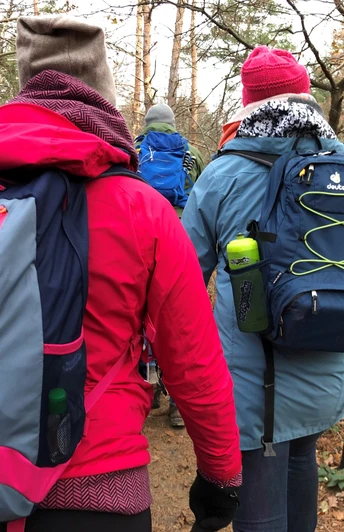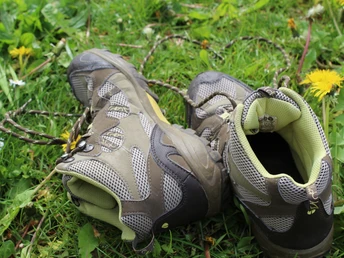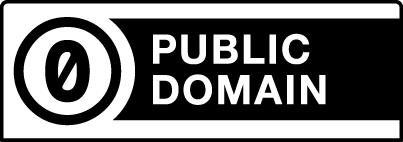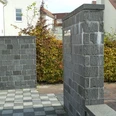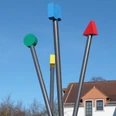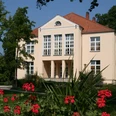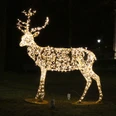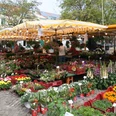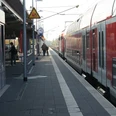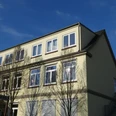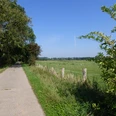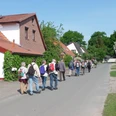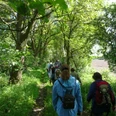- 2:50 h
- 11.75 km
- 18 m
- 18 m
- 4 m
- 18 m
- 14 m
- Destination: Clüverhaus, Große Kirchenstraße 1
The term "umzu" comes from North German and means "around".
Way description:
We start this circular walk at "Gaswerkstraße" heading west, always along the railroad line (1). You cross Bruchstraße and walk parallel to the Bremen-Hannover railroad line (2). At the end of the path, turn right and follow the path in the direction of Oyten. You cross the highway and then reach a moorland landscape. Keep left here until you reach the Oyter See lake (3). Your path now leads along the lake on the right, which you can also walk all the way around. After passing the campsite, you reach the road "Am Berg", into which you turn right. Continue straight ahead until a small farm track branches off to the right into the fields at the road "Zum Moor", opposite the Embsen shooting club. Turn right here. Keep left at the second junction and follow the road "Beekenende" to Embsen (4). Turn right into "Breite Straße" and then right again at "Embser Dorfstraße". You will now pass through the old town center of the Achim district of Embsen (5). Via the streets "Am Edelhof" and "In der Grund" you reach the highway again, which you cross under this time. Via "Sperlingsweg" and the adjacent "Lerchenstraße", you will return to the starting point in "Gaswerkstraße".
Sightseeing/interesting facts:
(1) Railway line:
In 1847, Achim entered the industrial age with the opening of the Bremen-Wunstorf railroad line. Achim station has retained its basic appearance to this day. It was only on July 1, 1899 that the neighbouring village of Baden, today's Achim district, was given a passenger stop after numerous Baden citizens had petitioned "the Highly Royal Railway Directorate".
In the 19th and 20th centuries, many emigrants used the railroad line (also known as the "American Line") from Stendal, via Uelzen, Langwedel and Bremen to Bremerhaven, among other places, to travel to America on one of the ships from Bremerhaven. As Bremerhaven did not have the hotel capacity, the less well-heeled emigrants waited in Bremen in the Missler Halls, the better-off in the luxury hotels. They only took the train to Bremerhaven a few days/hours before leaving for overseas.
(2) Former quarry:
Quarryland means swamp and marshland. The wide, flat grassland to the right behind the houses only gives a hint of the former quarry. A high groundwater level once allowed alders and sour grasses to grow here until ditches were dug and the land was cultivated.
The quarry and its waters are the habitat of various amphibians and a feeding ground for white storks. The amphibians hibernate under thick foliage or in burrows, some deep in the mud. The next generation usually migrates back to the waters in which they hatched to spawn.
(3) Oyter See:
The lake is located at the Bremer Kreuz and was created in the 1930s by soil excavation for the construction of the HaFraBa (Hamburg - Frankfurt - Basel) highway, later the BAB A1. Today, the area is used for local recreation with facilities for leisure and sport, hiking trails, a beach and a campsite.
(4) Storks:
Maybe you'll be lucky and spot a stork in the street "Beekenende"? White storks are one of the characteristic species of the Wesermarsch. They find food on the less intensively farmed grassland around Embsen and in the Achimer Bruch.
The number of storks in the Achimer area had continued to decline until the 1990s due to the loss of many farms and redevelopments. With the help of committed citizens, several artificial nests were erected, which were mounted on poles to protect them from martens and provided new nesting opportunities. Fortunately, a number of young storks can now be observed again in the Achim countryside.
(5) Embsen:
The village of Embsen originated as a noble estate, which was first mentioned as "Hemese" in a feudal roll of the Count of Schwerin in 1297. In 1645, the estate was owned by the Clüver family. After changing hands several times, it came to the later district administrator Achim von Düring in 1742. Two von Düring brothers are buried under stone tombs in a corner of the estate's courtyard. The rest of the estate was purchased in 1928 by Johann Bischoff from Achim, whose heirs still own it today.
The tour can also be found at Komoot.
Safety information:
Way description:
We start this circular walk at "Gaswerkstraße" heading west, always along the railroad line (1). You cross Bruchstraße and walk parallel to the Bremen-Hannover railroad line (2). At the end of the path, turn right and follow the path in the direction of Oyten. You cross the highway and then reach a moorland landscape. Keep left here until you reach the Oyter See lake (3). Your path now leads along the lake on the right, which you can also walk all the way around. After passing the campsite, you reach the road "Am Berg", into which you turn right. Continue straight ahead until a small farm track branches off to the right into the fields at the road "Zum Moor", opposite the Embsen shooting club. Turn right here. Keep left at the second junction and follow the road "Beekenende" to Embsen (4). Turn right into "Breite Straße" and then right again at "Embser Dorfstraße". You will now pass through the old town center of the Achim district of Embsen (5). Via the streets "Am Edelhof" and "In der Grund" you reach the highway again, which you cross under this time. Via "Sperlingsweg" and the adjacent "Lerchenstraße", you will return to the starting point in "Gaswerkstraße".
Sightseeing/interesting facts:
(1) Railway line:
In 1847, Achim entered the industrial age with the opening of the Bremen-Wunstorf railroad line. Achim station has retained its basic appearance to this day. It was only on July 1, 1899 that the neighbouring village of Baden, today's Achim district, was given a passenger stop after numerous Baden citizens had petitioned "the Highly Royal Railway Directorate".
In the 19th and 20th centuries, many emigrants used the railroad line (also known as the "American Line") from Stendal, via Uelzen, Langwedel and Bremen to Bremerhaven, among other places, to travel to America on one of the ships from Bremerhaven. As Bremerhaven did not have the hotel capacity, the less well-heeled emigrants waited in Bremen in the Missler Halls, the better-off in the luxury hotels. They only took the train to Bremerhaven a few days/hours before leaving for overseas.
(2) Former quarry:
Quarryland means swamp and marshland. The wide, flat grassland to the right behind the houses only gives a hint of the former quarry. A high groundwater level once allowed alders and sour grasses to grow here until ditches were dug and the land was cultivated.
The quarry and its waters are the habitat of various amphibians and a feeding ground for white storks. The amphibians hibernate under thick foliage or in burrows, some deep in the mud. The next generation usually migrates back to the waters in which they hatched to spawn.
(3) Oyter See:
The lake is located at the Bremer Kreuz and was created in the 1930s by soil excavation for the construction of the HaFraBa (Hamburg - Frankfurt - Basel) highway, later the BAB A1. Today, the area is used for local recreation with facilities for leisure and sport, hiking trails, a beach and a campsite.
(4) Storks:
Maybe you'll be lucky and spot a stork in the street "Beekenende"? White storks are one of the characteristic species of the Wesermarsch. They find food on the less intensively farmed grassland around Embsen and in the Achimer Bruch.
The number of storks in the Achimer area had continued to decline until the 1990s due to the loss of many farms and redevelopments. With the help of committed citizens, several artificial nests were erected, which were mounted on poles to protect them from martens and provided new nesting opportunities. Fortunately, a number of young storks can now be observed again in the Achim countryside.
(5) Embsen:
The village of Embsen originated as a noble estate, which was first mentioned as "Hemese" in a feudal roll of the Count of Schwerin in 1297. In 1645, the estate was owned by the Clüver family. After changing hands several times, it came to the later district administrator Achim von Düring in 1742. Two von Düring brothers are buried under stone tombs in a corner of the estate's courtyard. The rest of the estate was purchased in 1928 by Johann Bischoff from Achim, whose heirs still own it today.
The tour can also be found at Komoot.
Safety information:
- Throughout the entire tour, please note that the paths are used at your own risk
- No guarantee is given for the usability of the paths
- In the cities/towns, increased attention is generally required
- On the tour, you must expect to encounter danger points, such as bollards, barriers and unsecured crossings
Good to know
Best to visit
suitable
Depends on weather
Author
Mittelweser-Touristik GmbH
Lange Straße 18
31582 Nienburg/Weser
Organization
Mittelweser-Touristik GmbH
License (master data)
Mittelweser-Touristik GmbH
Our recommendations
Nearby
